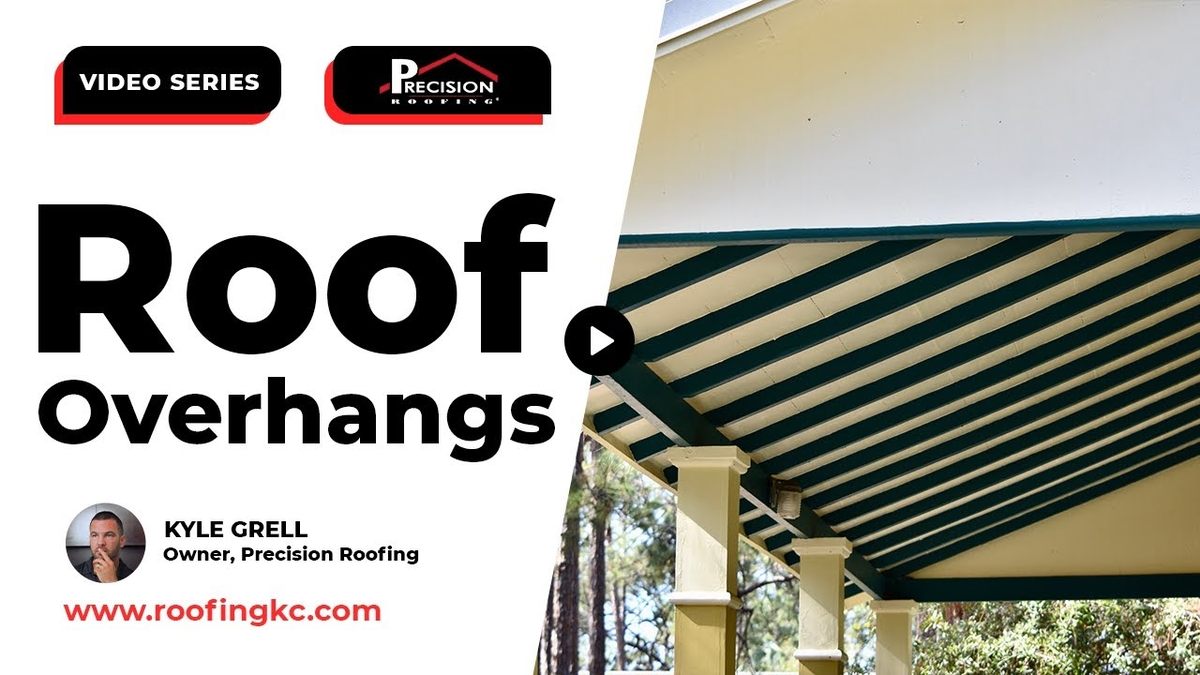When most people think about their roofing system, they focus on shingles, gutters, and flashing. But roof overhangs are just as critical to the long-term health of your home. If you’re building a new roof or replacing an older one, the size and design of the overhang can directly impact how well your home handles rain, snow, and moisture.
At Precision Roofing, we help homeowners understand how roof overhangs play a major role in preventing water damage, keeping the foundation dry, and improving siding performance.
Why Overhangs Matter for Your Home
Gable Overhangs vs. Eave Overhangs
There are two common types of roof overhangs: gable overhangs and eave overhangs. Gable overhangs run along the sloped edges of your roof, while eave overhangs extend horizontally from the lower edges. Both serve distinct purposes. Gable overhangs are often cosmetic but can help keep water from streaking down the siding. Eave overhangs, on the other hand, are functional and necessary for gutter installation and effective drainage.
Even though there’s no universal ideal size for roof overhangs, most homes have overhangs between 18 to 24 inches. This range strikes a good balance between aesthetic appeal and moisture protection.
How Roof Overhangs Help With Water Management
Prevent Dirty Runoff on Siding
Without proper overhangs, water coming off the roof runs directly down the siding. This runoff isn’t clean; it’s usually full of dirt, shingle granules, and debris. Over time, that can lead to streaks, wear on the paint or finish, and even water intrusion at vulnerable points like J-channels or window edges.
Roof overhangs provide a physical buffer, redirecting water away from the siding so it doesn’t test your home’s weatherproofing systems unnecessarily.
Provide a Mounting Point for Gutters
Another overlooked function of roof overhangs is gutter support. There’s no good place to install gutters or downspouts without a solid overhang. Gutters need to sit slightly off the edge of the roof to collect runoff properly. Overhangs give the fascia board the strength it needs to hold the gutter system in place.
When we install a roof at Precision Roofing, we check to ensure the overhang can support seamless gutters and perform well during heavy rain.
Protecting the Foundation From Moisture
Keep Water Away From the Base of the Home
The closer the water gets to your foundation, the greater the risk is for seepage and hydrostatic pressure. Roof overhangs help reduce this risk by directing runoff farther away from the home.
When paired with properly sloped gutters and downspouts, overhangs keep the ground near your home drier. This helps protect the structure and decreases how often your sump pump needs to operate. The further you can move that water away from the base of your home, the lower your risk of foundation leaks or moisture buildup.
Reduce Stress on Basement Waterproofing Systems
Most new homes are built with drainage systems like foundation seals and sump pumps. But even these can be overwhelmed if too much water collects around the base. Roof overhangs act as the first line of defense. By minimizing the water that even reaches the foundation, they allow your other systems to work more efficiently and last longer.
Can You Add Roof Overhangs to an Existing Home?
It’s Possible With the Right Planning
Adding roof overhangs to an existing structure is possible, but it requires more than just a simple roofing job. It involves structural planning, engineering, and sometimes building permits. Our team works closely with contractors to ensure the overhang addition is properly framed and supported.
Once the framing is complete, we handle the sheathing, remove the old roof, and install a brand-new system that ties everything together. This gives you full roof protection under one warranty and ensures the new overhangs are fully functional and integrated.
Work With a Roofing Team That Understands Water Protection
At Precision Roofing, we don’t just install shingles; we look at the whole system, including how your roof sheds water, where that water goes, and how to prevent long-term moisture issues. Roof overhangs are one of those small details that can make a big difference in performance, especially in climates with frequent rain or snow.
If you’re seeing water streaks on your siding, experiencing basement dampness, or just want to ensure your next roof is built to protect your entire home, we’ll walk you through your options and help you get a roof that looks good and lasts.
Key Takeaways
- Roof overhangs are essential for directing water away from siding and foundation areas.
- They help support gutter systems and reduce wear on exterior finishes.
- Overhangs can lower the risk of water entering around windows and foundations.
- Adding overhangs to existing homes is possible with proper structural support and planning.
- A roofing contractor who understands building science can ensure your entire system works together to prevent moisture damage.
Ready to protect your home from water damage? Contact us at Precision Roofing today for a detailed roof inspection and custom plan.



